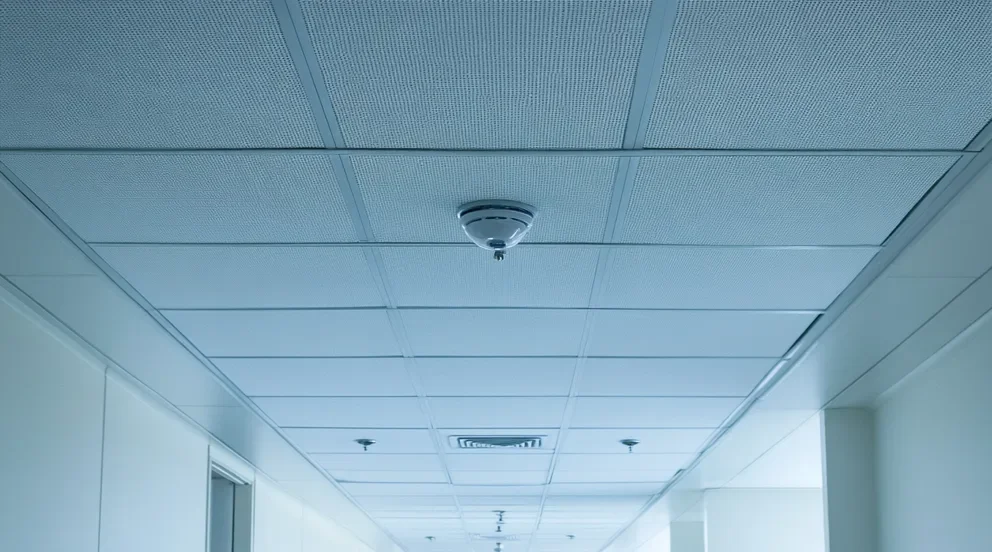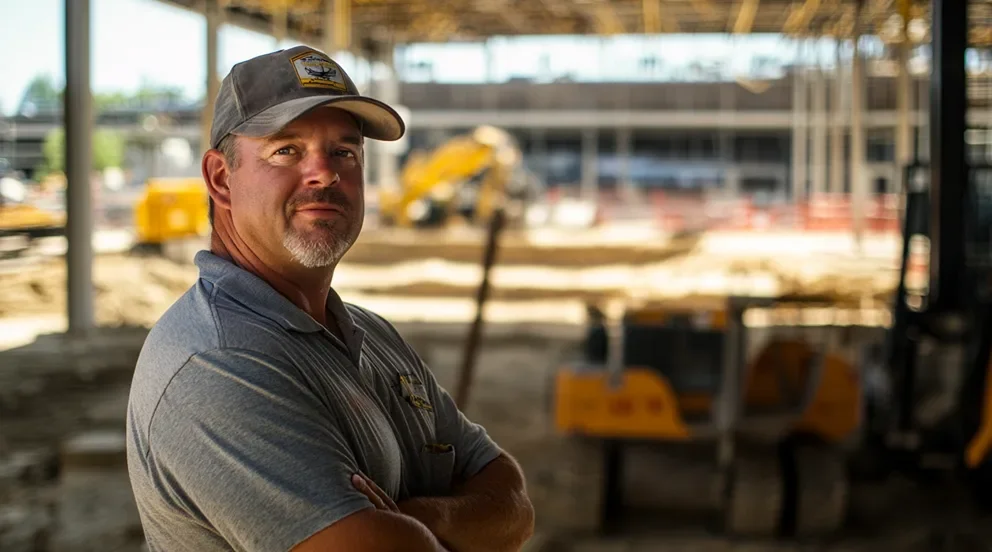A split system in HVAC is an air conditioning system that is composed of two separate components; an outdoor condenser and an indoor air handler. The outdoor condenser is responsible for the cooling and condensing of the refrigerant, while the air handler is responsible for the circulation and filtration of the air within the space.
The condenser is usually installed outdoors and contains a compressor, condenser coil, expansion valve, and other components. The compressor pumps the refrigerant through the condenser coil, where it is cooled and condensed. The refrigerant then passes through the expansion valve, where it is throttled and its pressure is reduced. This causes the refrigerant to change from a hot gas to a cold liquid.
The air handler is usually installed indoors and contains an evaporator coil, a fan motor, and other components. The evaporator coil is responsible for the cooling of the air that is blown over it. The refrigerant passes through the evaporator coil, where it is evaporated and absorbs heat from the air. The cooled air is then circulated through the space by the fan motor.
Split systems are the most common type of air conditioning system used in residential and light commercial applications. They are simple, efficient, and relatively inexpensive to install. They can be used to cool one or multiple rooms, depending on the size of the system. The only downside to split systems is that they are not as efficient as some other HVAC systems, such as heat pumps.
What are the key features of a Split System?
The key features of a split system in HVAC are that it is composed of two separate components; an outdoor condenser and an indoor air handler. The condenser is responsible for cooling and condensing the refrigerant, while the air handler is responsible for the circulation and filtration of the air within the space.
The condenser contains a compressor, condenser coil, expansion valve, and other components, and is usually installed outdoors. The compressor pumps the refrigerant through the condenser coil, where it is cooled and condensed. The refrigerant then passes through the expansion valve, where it is throttled and its pressure is reduced.
The air handler is usually installed indoors and contains an evaporator coil, a fan motor, and other components. The evaporator coil is responsible for the cooling of the air that is blown over it. The refrigerant passes through the evaporator coil, where it is evaporated and absorbs heat from the air. The cooled air is then circulated through the space by the fan motor.
Split systems are the most common type of air conditioning system used in residential and light commercial applications. They are simple, efficient, and relatively inexpensive to install. They can be used to cool one or multiple rooms, depending on the size of the system.
What are the benefits of using a Split System?
The main benefits of using a split system in HVAC are that it is simple, efficient, and relatively inexpensive to install. It is also the most common type of air conditioning system used in residential and light commercial applications.
Split systems are simple to install and easy to maintain. They do not require extensive ductwork, and the two components can be easily connected. This makes them easier to install and maintain than other types of air conditioning systems.
Split systems are also very energy efficient. The compressor in the condenser is designed to use less energy than other HVAC systems, and the evaporator coil in the air handler is designed to maximize the cooling capacity of the refrigerant. This helps to reduce energy costs.
Split systems are also relatively inexpensive to install. They require fewer components than other systems, and the components are relatively inexpensive. This makes them an attractive and cost-effective option for many homeowners and businesses.
Overall, split systems provide a simple, efficient, and cost-effective air conditioning solution. They are easy to install and maintain, and they help to reduce energy costs.
How does a split system in HVAC work?
A split system in HVAC works by using two separate components; an outdoor condenser and an indoor air handler. The condenser is responsible for cooling and condensing the refrigerant, while the air handler is responsible for the circulation and filtration of the air within the space.
The condenser contains a compressor, condenser coil, expansion valve, and other components. The compressor pumps the refrigerant through the condenser coil, where it is cooled and condensed. The refrigerant then passes through the expansion valve, where it is throttled and its pressure is reduced.
The air handler contains an evaporator coil, a fan motor, and other components. The evaporator coil is responsible for cooling the air that is blown over it. The refrigerant passes through the evaporator coil, where it is evaporated and absorbs heat from the air. The cooled air is then circulated through the space by the fan motor.
Overall, a split system in HVAC works by cooling and circulating air throughout a space using two separate components; an outdoor condenser and an indoor air handler. The condenser cools and condenses the refrigerant, while the air handler circulates and filters the air within the space. This helps to keep temperatures comfortable while reducing energy costs.
What are the components of a split system in HVAC?
The components of a split system in HVAC include an outdoor condenser and an indoor air handler. The condenser contains a compressor, condenser coil, expansion valve, and other components. The air handler contains an evaporator coil, fan motor, and other components.
The compressor pumps the refrigerant through the condenser coil where it is cooled and condensed. The refrigerant then passes through the expansion valve where it is throttled and its pressure is reduced.
The evaporator coil is responsible for cooling the air that is blown over it. The refrigerant passes through the evaporator coil, where it is evaporated and absorbs heat from the air. The cooled air is then circulated through the space by the fan motor.
These components work together to deliver cooled air into the space while reducing energy costs. Split systems are easy to install and maintain, and they help to provide a comfortable environment.
What types of spaces is a split system best suited for?
A split system in HVAC is best suited for spaces that require cooling and air circulation, such as homes, office buildings, warehouses, and other commercial applications. Split systems are ideal for these types of spaces because they can be easily customized to meet specific air conditioning needs.
Split systems are also very energy efficient and cost-effective. They require fewer components than other systems, and the components are relatively inexpensive. This makes them an attractive option for many homeowners and businesses.
Overall, a split system in HVAC is well suited for many different types of spaces that need cooling or air circulation. The components can be easily connected and customized to meet specific needs, and they offer a simple, efficient, and cost-effective solution. To summarize, a split system in HVAC is well suited for spaces that require cooling or air circulation. It works by using two separate components – an outdoor condenser and an indoor air handler – to cool and circulate air throughout the space. The components are relatively inexpensive and energy efficient, making them an attractive option for many homeowners and businesses. They are also easy to install and maintain, helping to reduce energy costs while providing a comfortable environment.
What are the disadvantages of a split system?
The main disadvantage of a split system in HVAC is that it can be more difficult to repair than other systems. The components are separated and can be harder to access for repairs or maintenance. Additionally, the cost of installing a split system may be higher than other types of systems since it requires two separate components.
Split systems also require regular maintenance and servicing in order to operate at optimum levels, which can add to upkeep costs. It is important to regularly check all the connections and components of the system as well as clean the filters on a regular basis.
The final potential downside of a split system is that they may not always provide enough cooling power for larger spaces or areas with extreme temperatures.
Overall, split systems can be a great option for many types of spaces that require cooling or air circulation. However, they may not always provide enough cooling power in extreme temperatures or larger spaces, and they can be more expensive to install and difficult to repair than other systems. Regular maintenance is also required to keep the system operating at its best.
What are the differences between a split system and other types of HVAC systems?
The main difference between a split system and other types of HVAC systems is that a split system uses two separate components, an outdoor condenser and an indoor air handler, to cool and circulate air throughout the space. Other systems may use one large unit or multiple smaller units to do the same job.
Split systems are also typically easier to install than other HVAC systems since they require fewer components. They can also be more energy efficient and cost-effective in some cases since they require fewer components than other systems.
However, split systems may not provide enough cooling power for larger spaces or areas with extreme temperatures, and they can be difficult to repair due to the separated components. Additionally, regular maintenance is required to keep the system operating at its best.
Overall, split systems can be a great option for many types of spaces that require cooling or air circulation. However, they may not always provide enough cooling power in extreme temperatures or larger spaces and they can be more expensive to install and difficult to repair than other systems. Regular maintenance is also required to keep the system operating at its best.
What type of maintenance is required for a split system?
Regular maintenance is important for a split system to ensure that it is running optimally and efficiently. This includes regularly checking all the connections and components of the system as well as cleaning the filters on a regular basis. Additionally, checking the refrigerant levels and inspecting ducts for any blockages or debris should be done periodically.
It is also recommended to have an HVAC specialist inspect your system at least once a year to check for any issues that may need repair or replacement. This can help catch potential problems before they become more serious, which can save time and money in the long run.
Overall, proper maintenance of a split system is essential for ensuring its longevity and efficiency. Regular inspections and cleanings can help keep the system running optimally and can help prevent more costly repairs in the future.
What type of spaces are best suited for a split system?
Split systems are typically well-suited for spaces that require significant cooling or air circulation, such as offices, commercial buildings, and large homes. They may also be beneficial for areas with extreme temperatures since they can provide consistent cooling power throughout the space. Split systems can also be a good option for newer buildings since they require fewer components than other HVAC systems and can be easier to install.
However, split systems may not always provide enough cooling power in larger spaces or areas with extreme temperatures, and they can be difficult to repair due to the separated components. Additionally, regular maintenance is required to keep the system operating at its best.
Overall, split systems can be a great option for many types of spaces that require cooling or air circulation. However, they may not always provide enough cooling power in extreme temperatures or larger spaces and they can be more expensive to install and difficult to repair than other systems. Regular maintenance is also required to keep the system operating at its best.



